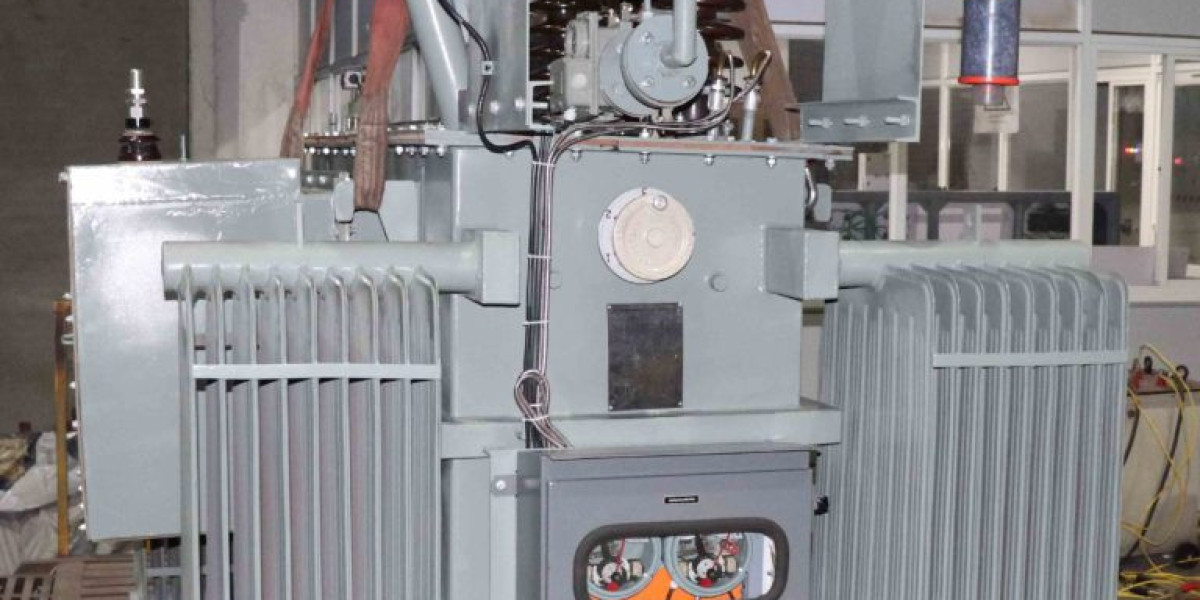Introduction
What Is a Transformer electrical power system by efficiently transfers electrical energy between circuits through electromagnetic induction? They are widely used for voltage regulation, power distribution, and electrical isolation. Various types of transformers serve specific purposes based on their design, size, and application. This article explores transformers in depth, focusing on distribution transformers, power transformers, 3-phase transformers, and furnace transformers.
What Is a Transformer?
A transformer is an electrical device that uses electromagnetic induction to move electrical energy from one circuit to another. It is made up of a magnetic core surrounded by primary and secondary windings. A magnetic field produced by an alternating current (AC) passing through the primary winding causes a voltage to be induced in the secondary winding. Depending on the design, transformers can either step up (increase) or step down (decrease) voltage levels.
Transformers are essential in power generation, transmission, and distribution systems, ensuring that electricity is delivered efficiently and safely to consumers.
Types of Transformers
1. Distribution Transformers
Definition and Function
Distribution transformers are used to step down high voltage from transmission lines to lower voltages suitable for consumer use. They are typically located at substations or utility poles near residential and commercial buildings.
Characteristics:
Operate at low voltage levels (e.g., 11kV, 6.6kV, 415V, and 230V)
Designed for continuous operation with minimal power loss
Typically oil-filled or dry-type transformers
Compact and efficient for localized power distribution
Applications:
Power distribution in residential areas
Commercial and industrial power supply
Rural and urban electrical networks
2. Power Transformers
Definition and Function
Power transformers are used in transmission networks to transfer electrical energy at high voltages over long distances. They are larger than distribution transformers and operate at higher efficiency levels.
Characteristics:
Designed for high-power applications (above 33kV)
Efficient at handling high loads with minimal energy loss
Oil-cooled or gas-insulated for effective heat dissipation
Typically used in substations and power plants
Applications:
High-voltage power transmission
Electrical substations
Industrial power supply
3. 3-Phase Transformers
Definition and Function
A three-phase transformer is a type of transformer used to manage three-phase electrical systems. These systems are commonly used in industrial and commercial applications for efficient power distribution.
Characteristics:
includes three winding sets, one for each phase.
Can be designed as a bank of three single-phase transformers or a single unit with three windings
Provides a balanced power supply, reducing energy loss and improving efficiency
Available in different configurations such as Delta-Delta, Delta-Wye, and Wye-Wye
Applications:
Industrial power distribution
Large commercial buildings
Electrical substations and power plants
4. Furnace Transformers
Definition and Function
Furnace transformers are specialized transformers designed to supply power to electric furnaces used in steel plants, foundries, and other heavy industries. They handle high current loads required for heating metal materials.
Characteristics:
Designed to withstand extreme thermal conditions
Capable of handling fluctuating loads
Equipped with tap changers to adjust voltage levels for different heating requirements
Typically oil-cooled or water-cooled
Applications:
Electric arc furnaces (EAF) in steel production
Induction furnaces for melting and refining metals
Foundries and metallurgical industries
Importance of Transformers in Power Systems
Transformers are indispensable in electrical power systems, ensuring efficient power transmission and distribution. Their importance includes:
Voltage Regulation: Transformers step up voltage for efficient transmission and step it down for safe consumption.
Power Efficiency: Reduces energy losses in power lines, improving overall system efficiency.
Safety and Reliability: Provides electrical isolation, protecting equipment and consumers from power surges.
Cost-Effectiveness: Minimizes energy waste, reducing operational costs in power systems.
Conclusion
Transformers are fundamental components in modern electrical infrastructure, enabling efficient power transmission, distribution, and industrial applications. From distribution transformers supplying homes to power transformers managing high-voltage networks, each type serves a vital role in ensuring a stable and reliable electricity supply. Understanding the functions and applications of different transformers helps in selecting the right transformer for specific industrial, commercial, or residential needs.







